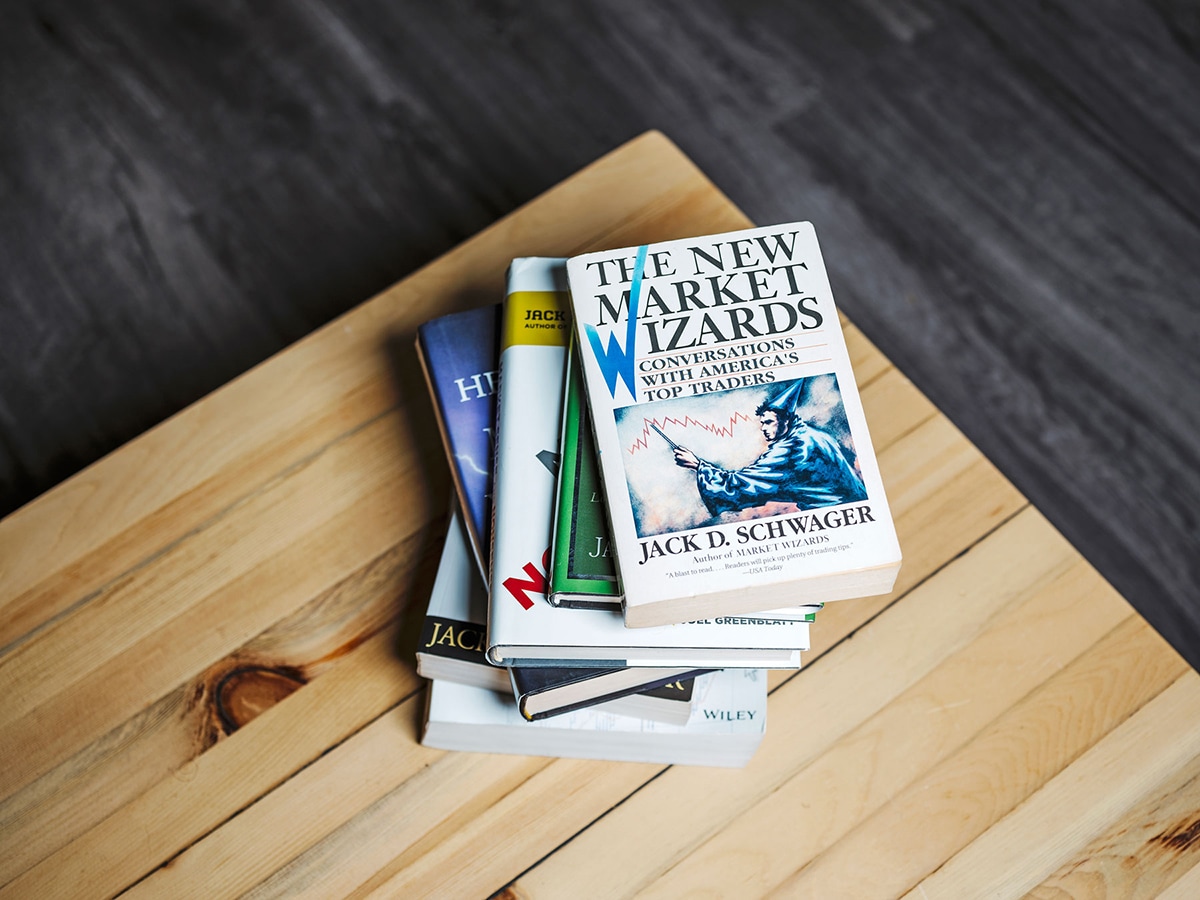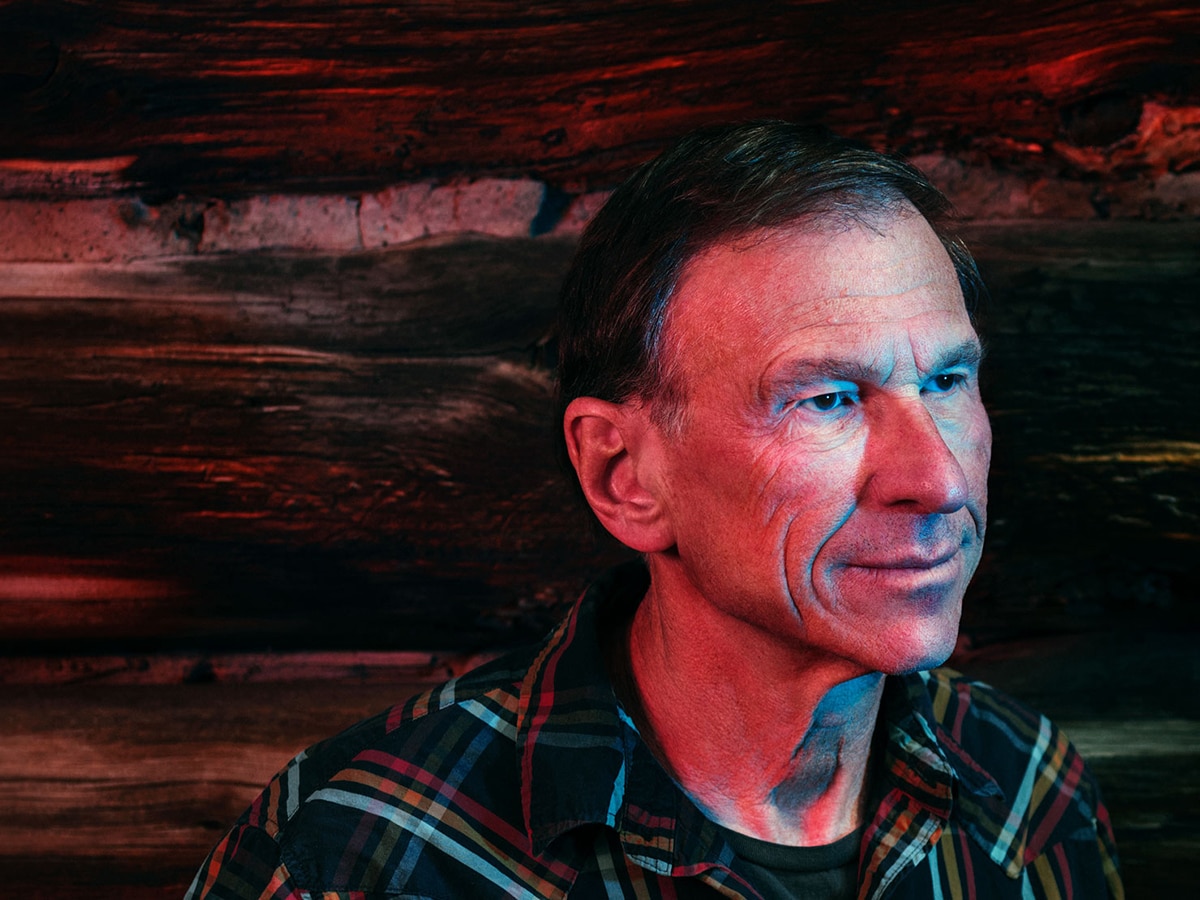There’s no shortage of epic tales on Wall Street. It’s not only the high-stakes gambles with the potential for massive gains or huge losses that steals people’s attention, but the idiosyncratic personalities of some of the community’s most influential traders that make for compelling reading.
Nevertheless, the world of trading and investing, to those on the outside, can often seem hugely secretive.
There is one person that has been able to penetrate this world and gain the trust of these enigmatic individuals — Jack Schwager. The biggest names in the business have fallen under his spell, and after a thoroughly engaging interview, it’s understandable why.
Who is the man that the world’s most influential investors consider their confidant?
The trader’s hall of fame
There’s a peacefulness to Schwager that instils calmness. Like the majestic mountains that frame his home in Winter Park, Colorado, his warm, considered tone creates an open space for sharing ideas and opinions.
It’s this assuredness, not to mention his innate understanding of the mechanics of the markets, which has helped him to get unfettered access to the habits and customs of renowned investors such as Ray Dalio, Stanley Druckenmiller and Monroe Trout.
In his bestselling book series, Market Wizards, Schwager talks to some of the world’s best traders and distils their secrets to success. Interviewees are chosen for their extraordinary outperformance and exceptional trading skill.
But the appeal really lies in how Schwager tells their stories. He has a way of humanising them that makes you feel as if you’re the one asking Jamie Mai, the co-founder of Cornwall Capital — featured in Michael Lewis’ The Big Short — how he discovered the subprime mortgage scandal that led to the 2008 financial crisis.
Throughout the books, the interviews capture not only the essence of each trader’s investment style and market focus, but also their backgrounds and initial attraction to the stock market.
While the conversations with hedge fund billionaires Dalio and Cohen are of course another major draw, it’s Schwager's enthralling style that keeps you hooked. Without him, the stories behind some of the most epic trades, and not just the bets that paid off, wouldn’t have been exposed.

The philosophy of a trading savant
When Schwager was just stepping onto the career ladder in 1971, he had no interest in the markets. He was more curious about understanding how the global economy behaved.
Born in Belgium and raised in Brooklyn, he had just graduated from Brown University with a Masters in the subject, and by chance landed an interview for the role of commodity research analyst in New York.
“I actually knew nothing about futures at the time,” he says. “My economics education included very little of anything on markets and certainly nothing on anything like futures,” Schwager tells Opto.
It was then that Schwager began writing for Futures – then called Commodities Magazine. His articles gained him some recognition in the industry, and in two short years, he went from being an analyst to a research director — a role he held at a number of firms for the next 20 years. Among the more recognisable were Smith Barney, (now co-owned by Citigroup and Morgan Stanley), Paine Webber (now UBS) and Prudential Securities (now Prudential Financial), Schwager notes.
Schwager was strictly a fundamentalist until he met Steve Chronowitz, who at the time was the technical analyst who worked for him at Loeb Rhoades Hornblower. Schwager noticed that of all his analysts, Chronowitz was the only who was significantly "more right than wrong.”
“I got to understand [from Chronowitz] that there was a good rationale for why technical analysis worked and that’s simply because the market price reflects all the other information in the market. It's not like you're ignoring fundamentals, you're basically seeing the impact of fundamentals and psychology in the price.”
“I got to understand [from Chronowitz] that there was a good rationale for why technical analysis worked and that’s simply because the market price reflects all the other information in the market. It's not like you're ignoring fundamentals, you're basically seeing the impact of fundamentals and psychology in the price”
Ever since, he’s been a firm believer in the value of charts and technical analysis. He also appreciated that technical analysis was far more compatible with risk management than fundamental analysis. Once he switched from trading based on fundamental analysis to using technical analysis instead, Schwager said he went from consistently losing to becoming net profitable.

The first market wizards
The publication of A Complete Guide to the Futures Markets — a compact 800-page analytical guide to the futures markets — in 1984 (a revised version was published in 2017) acted as a catalyst for the first of the Market Wizards books. Several years later, another publisher invited Schwager to lunch to pitch him on the idea of doing a series of analytical books. Schwager told him that he had no interest in doing another analytical book and that if he were to write another book he wanted it to be for a larger audience. He told the publisher about his concept for the book that was to become Market Wizards.
“I had thought that a book of interviewing these great traders was a good idea. I also thought it would be a good excuse to meet these people and pick their brains,” he explains. “It gave me an excuse to delve into what they were doing and learn.”
“I had thought that a book of interviewing these great traders was a good idea. I also thought it would be a good excuse to meet these people and pick their brains”
Fortunately, Schwager personally knew some phenomenal traders. He recruited Michael Marcus, who Schwager had met while interviewing to fill the research position that Marcus was vacating. Through Marcus, he met Bruce Kovner, the founder of Caxton Associates, and also Ed Seykota, who had developed one of the first computer programs for testing and trading systems. Schwager’s circle grew to 17 interviewees.
Some of the biggest names in the business were in the book, including Kovner, Jim Rogers, co-founder of the Quantum Fund, Paul Tudor Jones, chief investment officer at Tudor Group, Michael Steinhardt, the founder of Steinhardt Partners, and Richard Dennis, a celebrated commodities trader who famously believed that successful trading could be taught — he recruited 23 novice traders, who became millionaires, to prove his point.

Building a bespoke strategy
According to Schwager, “The personalities of the traders I interviewed are as diverse as any random group of people you want to pick.” However, there are commonalities. Each tend to have a very clear trading method that matches their personality. Randy McKay — a veteran trader who turned $10,000 into over $10m over 20-years — noted in his Market Wizards interview that this was common among virtually every successful trader he knew.
“The personalities of the traders I interviewed are as diverse as any random group of people you want to pick”
From his time spent with these investing icons, Schwager was also able to determine that they were all “very, very disciplined people”, who were hard workers but had tremendously different trading methodologies.
Schwager explains that each individual hones in on a unique factor that they believe is critical, and that works for them. “So by definition that's always going to be something different,” he says. Their approaches can range from purely fundamental to purely technical, from short-term to long-term, and from the intuitive trading style that made Paul Tudor Jones so attuned to the markets to the smart asymmetric bets that epitomises Mai’s approach.
And, even for individual traders, their methodologies may change significantly over time. As Colm O’Shea of COMAC Capital explained to Schwager, “Traders who are successful over the long run adapt. If they do use rules, and you meet them 10 years later, they will have broken those rules. Why? Because the world changed.”
Schwager says, “The closest thing to a single common denominator—but even that has its rare exception—is that almost all of them are pretty rigorous about risk management.” Often their strict adherence to risk management has its roots in a painful experience, For example, Paul Tudor Jones’s most memorable and influential market experience was a cotton trade in 1979 that saw his accounts lose 60%–70%. Ever since, risk control has become the essence of his trading style. in Jones’ own words: “I have a very short-term horizon to pain.”
“The closest thing to a single common denominator—but even that has its rare exception—is that almost all of them are pretty rigorous about risk management”
Hedge Fund Legends
Given Schwager’s expertise in the futures market, his transition to the hedge fund industry was a natural fit. At the turn of the millennium, he landed a job as a partner at Fortune Group, a London-based hedge fund advisory firm that was later acquired by Close Brothers Group.
After leaving Fortune, Schwager wrote Hedge Fund Market Wizards, in which he explored each manager’s edge — something that is critical to anyone who is trying to identify which trades to focus on. The book profiled legends such as Edward Thorp, of Princeton-Newport Partners, and Ray Dalio, of Bridgewater Associates.
Perhaps no hedge fund manager has been more innovative than Thorp. Among his accolades are the first successful quant fund, the first market-neutral fund, the first implementation of statistic arbitrage, the first implementation of convertible arbitrage, and the first formulation of an option-pricing model that was equivalent to, and preceded, the famous Black-Scholes model.
Thorp’s performance flies in the face of the theory that it is impossible to consistently win in the markets. Between 1969 and 1988, his first hedge fund had a track record of 227 winning months and only three losing months, a 98.7% winning percentage.
Dalio’s remarkable achievement has been his ability to generate attractive returns on enormous assets. Even taking into account the 15% drop in assets under management during March and April, Bridgewater Associates’ May 13F filing still showed $138bn at the end of April, making it the world’s biggest hedge fund.
For Schwager, Dalio is “a student of history.” The superiority of his hedge fund is its fundamentally-based computer model that incorporates historical analysis going back hundreds of years. “Having that perspective of how markets work in all different types of situations, over broad periods of history, I think is where the edge of his whole overall approach is. Dalio also places a very strong emphasis on learning from mistakes.”

Discovering Unknown Market Wizards
Through his work at Fortune Group, Schwager met Emanuel Balarie, who engaged him a consultant to construct a multimanager portfolio for ADM Capital.
Balarie later went on to pitch Schwager an idea a platform through which traders could link their personal trading accounts and be discovered by institutional money looking for fresh talent.
Schwager was on board. With a long-term vision of disrupting Wall Street and democratising the capital allocation process, the pair founded FundSeeder in 2014. In the ensuing years, they launched FundSeeder.com, which provided traders with performance metrics and analytics. It also allowed traders to create “verified” track records by linking their account.
In his upcoming book, Unknown Market Wizards: the best traders you’ve never heard of, which will be published by Harriman House in November, Schwager focuses on solo traders that were not only operating in complete obscurity but, amazingly, had some of the “best performance records I have ever encountered.” Several of these traders were discovered via FundSeeder.com.
One of the traders profiled, Amrit Sall, a futures trader, has averaged annual returns of 337% over 13-years, using a strategy that Schwager had never seen before. On a basic level, Sall traded market-moving events.
“Essentially, what he was doing was using the influx of new information and being very, very prepared on how the market should react to that information. He had a precise game plan,” Schwager recalls.
“Essentially, what he was doing was using the influx of new information and being very, very prepared on how the market should react to that information. He had a precise game plan”
Daljit Dhaliwal, another trader in the book, also used a “macro, event-driven” trading approach. Dhaliwal averaged annual gains of 298% over a nine-year period, and while he has an average annualised volatility of an extremely high 84%, his maximum drawdown is under 20%.
These are just some of the interviews that are featured in his upcoming book.

The secrets to successful trading
To conclude each book, Schwager compiles the wisdom he’s learnt from each trader into epigrams. Some memorable examples of these include the advice to “guard against impulsive trades” or to “choose meaningful stop points”.
Perhaps the most expressive, however, is “if you’re on the right side of euphoria or panic, liquidate or lighten up”. As each individual is unique, the lessons can always be adapted in a distinctive way, making Schwager’s tomes timeless resources.
“I have a rule, whenever I start trading I always risk a small amount and if I happen to lose that small amount then I'll stop, and I'll come back at a later time”
It’s these lessons that also inform his own personal trading. “I have a rule, whenever I start trading I always risk a small amount and if I happen to lose that small amount then I'll stop, and I'll come back at a later time.”
Like the mountains that surround Schwager, the grandeur of the Market Wizards series and the lessons he imparts about how investing giants reached their peaks will stand the test of time.
Disclaimer Past performance is not a reliable indicator of future results.
CMC Markets is an execution-only service provider. The material (whether or not it states any opinions) is for general information purposes only, and does not take into account your personal circumstances or objectives. Nothing in this material is (or should be considered to be) financial, investment or other advice on which reliance should be placed. No opinion given in the material constitutes a recommendation by CMC Markets or the author that any particular investment, security, transaction or investment strategy is suitable for any specific person.
The material has not been prepared in accordance with legal requirements designed to promote the independence of investment research. Although we are not specifically prevented from dealing before providing this material, we do not seek to take advantage of the material prior to its dissemination.
CMC Markets does not endorse or offer opinion on the trading strategies used by the author. Their trading strategies do not guarantee any return and CMC Markets shall not be held responsible for any loss that you may incur, either directly or indirectly, arising from any investment based on any information contained herein.
*Tax treatment depends on individual circumstances and can change or may differ in a jurisdiction other than the UK.
Continue reading for FREE
- Includes free newsletter updates, unsubscribe anytime. Privacy policy





